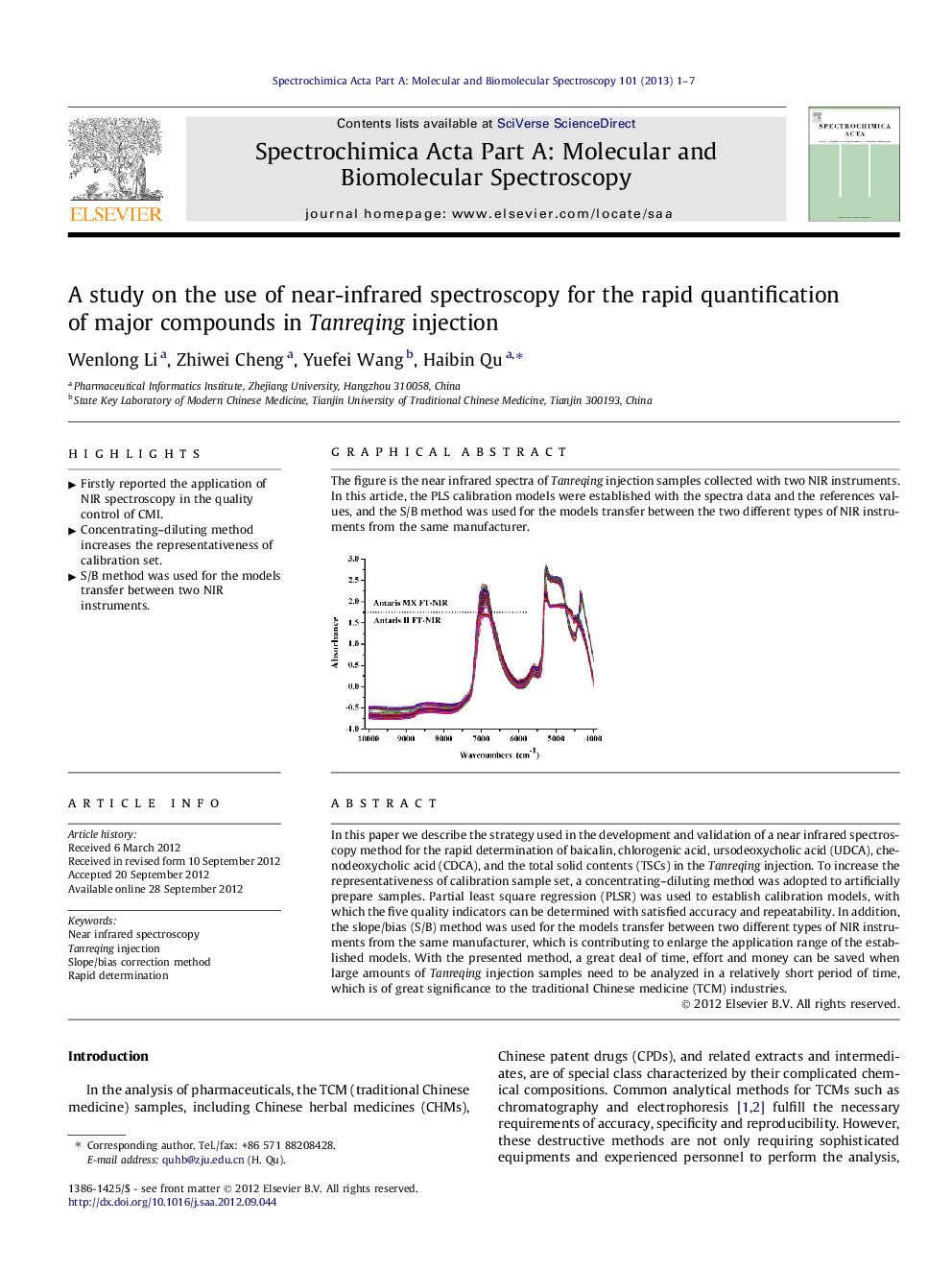| Article ID | Journal | Published Year | Pages | File Type |
|---|---|---|---|---|
| 1235024 | Spectrochimica Acta Part A: Molecular and Biomolecular Spectroscopy | 2013 | 7 Pages |
In this paper we describe the strategy used in the development and validation of a near infrared spectroscopy method for the rapid determination of baicalin, chlorogenic acid, ursodeoxycholic acid (UDCA), chenodeoxycholic acid (CDCA), and the total solid contents (TSCs) in the Tanreqing injection. To increase the representativeness of calibration sample set, a concentrating–diluting method was adopted to artificially prepare samples. Partial least square regression (PLSR) was used to establish calibration models, with which the five quality indicators can be determined with satisfied accuracy and repeatability. In addition, the slope/bias (S/B) method was used for the models transfer between two different types of NIR instruments from the same manufacturer, which is contributing to enlarge the application range of the established models. With the presented method, a great deal of time, effort and money can be saved when large amounts of Tanreqing injection samples need to be analyzed in a relatively short period of time, which is of great significance to the traditional Chinese medicine (TCM) industries.
Graphical abstractThe figure is the near infrared spectra of Tanreqing injection samples collected with two NIR instruments. In this article, the PLS calibration models were established with the spectra data and the references values, and the S/B method was used for the models transfer between the two different types of NIR instruments from the same manufacturer.Figure optionsDownload full-size imageDownload as PowerPoint slideHighlights► Firstly reported the application of NIR spectroscopy in the quality control of CMI. ► Concentrating–diluting method increases the representativeness of calibration set. ► S/B method was used for the models transfer between two NIR instruments.
